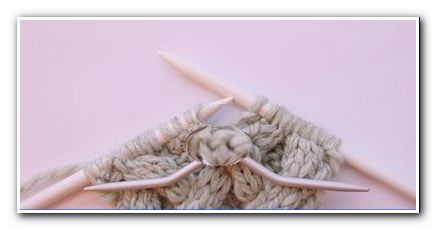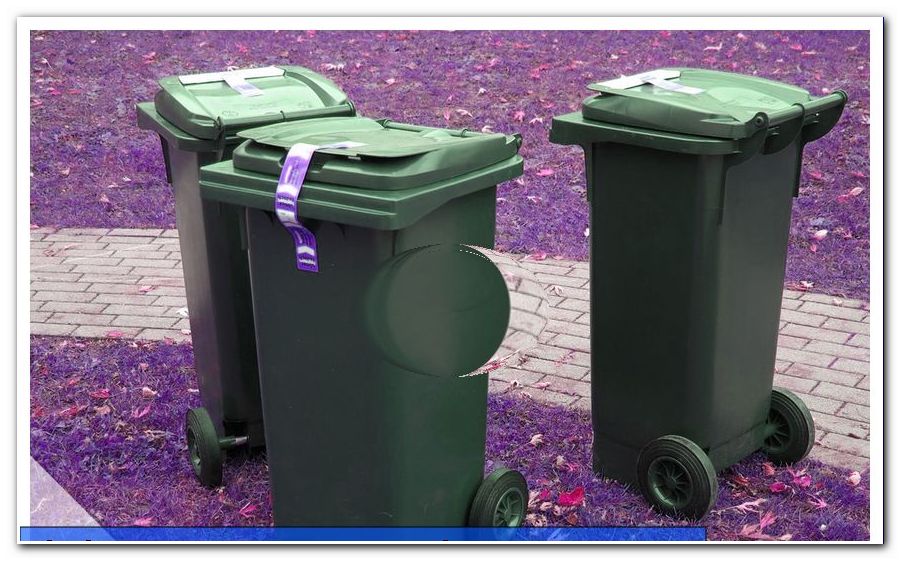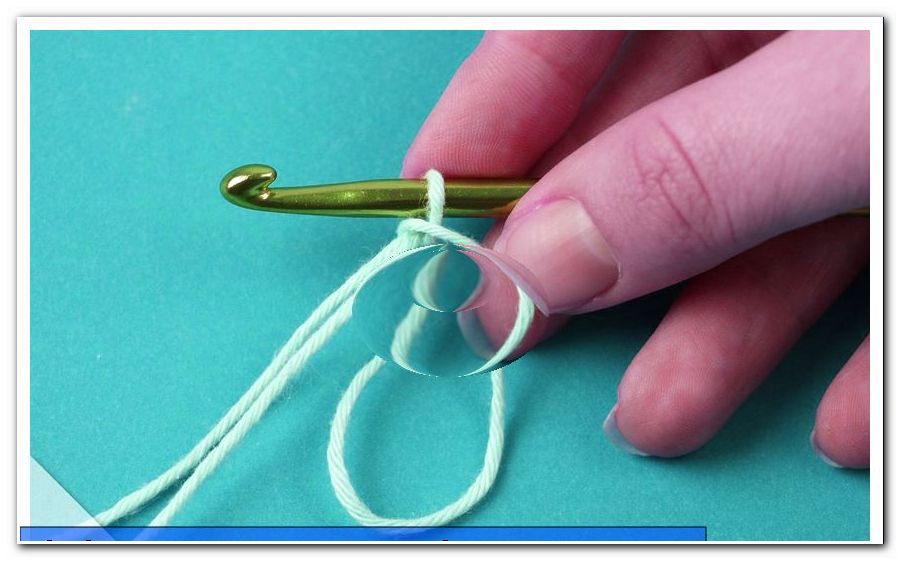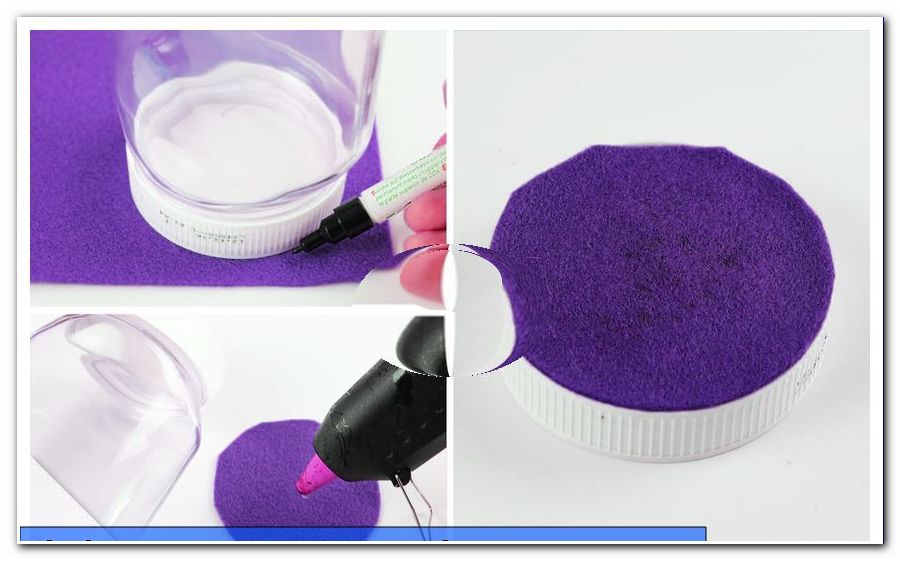Knit Celtic Patterns - Knit Celtic Patterns with free instructions

Celtic patterns are characterized by their intricately intertwined lines. Knitting Celtic patterns is considered difficult because beginners can easily lose track in the jungle of crossed stitches. In this guide, however, we show you a simple variant that still looks very special, for example on the front of a sweater. We suggest a headband to start with the pattern.
Knitting the intricate Celtic pattern seems too difficult for you ">
content
- Material and preparation
- Basics
- Instructions | Knit celtic pattern
- Exercise project | headband
- Variation of the Celts pattern
Material and preparation
The best way to knit the intricate Celtic pattern is with a smooth thread so that it comes into its own. So do not use bouclé wool, fleece yarn or similar. For your first try, choose a needle size that makes knitting easy. For which strengths your yarn is suitable, read on the banderole. If you want to knit the headband described below as a training project, also note that the wool is easy to wash and feels soft on the skin. Whether you prefer to use virgin wool or use synthetic fibers is up to your taste.
You need:
- smooth yarn (for the headband 30 to 50 grams)
- a few knitting needles of the appropriate size
- an auxiliary needle
- a wool needle (for sewing on the headband)

Tip: Use either a special curved cable needle or a needle from a double pointed needle as an auxiliary needle. It is important that the needle has a point on both sides. It should either have the same thickness as the knitting needles or be a little thinner, but definitely not thicker.
Basics
Cross stitches with the auxiliary needle
Push the number of stitches specified in the instructions onto the auxiliary needle without knitting it.

When doing this, note whether you should place the auxiliary needle in front of or behind your work, i.e. the knitted fabric. Then knit the next stitches as required in the pattern description.

As soon as the instructions indicate this, work the stitches on the auxiliary needle directly from it. The stitches have now exchanged places with the ones next to them and therefore appear crossed.

edge stitches
So that your knitting project gets nice finishes, you should cast on two additional stitches. If the edges are visible later, as with the headband, the chain edge is suitable. To do this, do not knit the first stitch in each row, just slide it over the right needle, placing the thread in front of the work. Work the last stitch on the right. The stable knot edge is a good choice for edges that are sewn. Here you knit all edge stitches to the right.

Instructions | Knit celtic pattern
Cast on a stitch count that is divisible by ten and five additional stitches. Also think of two edge stitches. These are not listed in the following instructions. In order for the Celtic pattern to stand out, it should be at least 25 stitches (as in our pictures).
With more stitches you can draw the pattern as you like. The ribbons loop around each other accordingly. Use it to design the front of a sweater, for example. Alternatively, you can knit a strip of Celtic pattern over 25 stitches on a smooth, left background. To do this, work the stitches next to the pattern strip in rows (= rows with an odd number) on the left and in back rows on the right.
In each row, start with the stitches before the first asterisk (*) in the description. Then repeat the piece between the two symbols until there are only a few stitches left on the left needle. End the row as indicated after the second asterisk. Before you start with the pattern, work on two preparatory series as a basis. You only knit this once at the beginning of your project.

1st preparation row: 3 stitches on the right, * 4 stitches on the left, 6 stitches on the right *, 2 stitches on the left
2nd preparation row: 2 stitches on the right, * 6 stitches on the left, 4 stitches on the right *, 3 stitches on the left

The following eight rows form the actual pattern . Repeat this continuously until the sample is large enough for your project.
1st row: 3 stitches on the right, * 4 stitches on the left, 3 stitches on the auxiliary needle before work, 3 stitches on the right, the stitches from the auxiliary needle on the right *, 2 stitches on the left
2nd row: 2 stitches on the right, * 6 stitches on the left, 4 stitches on the right *, 3 stitches on the left

3rd row: * put 3 stitches on the auxiliary needle before work, 2 stitches on the left, put the stitches on the auxiliary needle on the right, 2 stitches on the auxiliary needle behind the work, 3 stitches on the right, stitches on the auxiliary needle on the left *
4th row: 3 stitches on the left, * 4 stitches on the right, 6 stitches on the left *, 2 stitches on the right

5th row: 2 stitches on the left, * 3 stitches on the auxiliary needle behind the work, 3 stitches on the right, the stitches on the auxiliary needle on the right, 4 stitches on the left *, 3 stitches on the right
6th row: same as 4th row

7th row: * put 2 stitches on the auxiliary needle behind the work, 3 stitches on the right, put the stitches on the auxiliary needle on the left, 3 stitches on the auxiliary needle in front of the work, 2 stitches on the left, stitches on the auxiliary needle on the right *
8th row: same as 2nd row

This is what the finished Celtic pattern looks like .

Exercise project | headband
Try out how many stitches you need to make the headband wide enough. Note that the knitted fabric in the Celtic pattern contracts through the crossed stitches. The stitch cast and the preparation rows must therefore be significantly wider than the headband should be. We knitted with a thick wool and needle size seven with 25 stitches (plus two edge stitches).
Work in a Celtic pattern with a chain edge until the headband is long enough to fit around your head. Chain off the project and sew the two short sides together from the back. Your headband in Celtic pattern is ready!

Variation of the Celts pattern
Variation: Celtic pattern combined with pearl pattern
In the case of thinner wool, it makes sense to work a few stitches in the pearl pattern to the left and right of the Celtic pattern. You can learn how to knit this simple pattern classic in our instructions: Knitting pearl pattern - DIY instructions for beginners.
In the headband in the photo, we knitted two stitches in a pearl pattern on each side. You can expand this as you like, depending on how many stitches you need for the required width.
So the series looks like this:
Edge stitch - two stitches pearl pattern - 25 stitches Celtic pattern - two stitches pearl pattern - edge stitch





